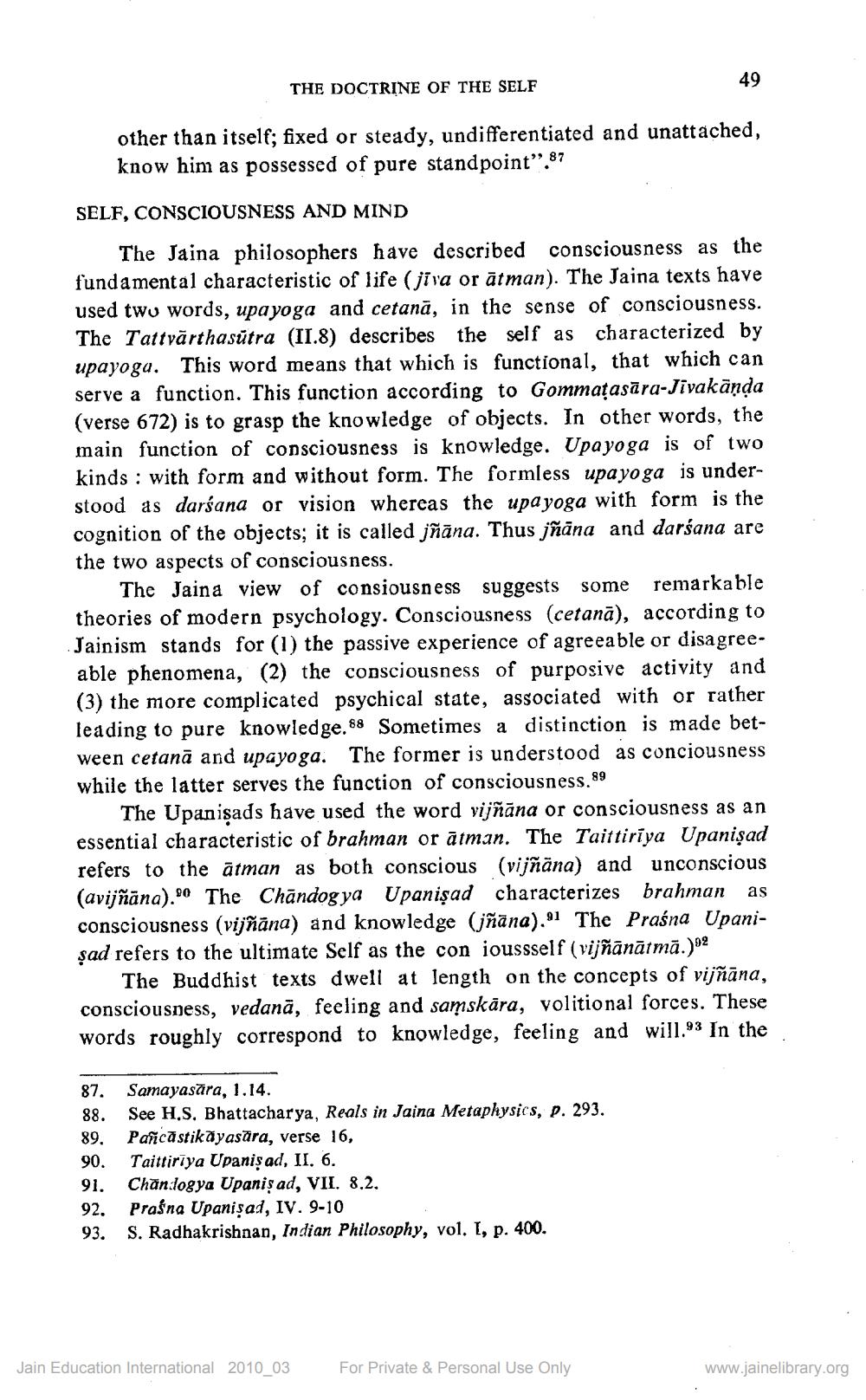________________
THE DOCTRINE OF THE SELF
49
other than itself; fixed or steady, undifferentiated and unattached,
know him as possessed of pure standpoint”.87 SELF, CONSCIOUSNESS AND MIND
The Jaina philosophers have described consciousness as the fundamental characteristic of life (jiva or ātman). The Jaina texts have used two words, upayoga and cetanā, in the sense of consciousness. The Tattvārthasūtra (II.8) describes the self as characterized by upayoga. This word means that which is functional, that which can serve a function. This function according to Gommațasāra-Jivakāņda (verse 672) is to grasp the knowledge of objects. In other words, the main function of consciousness is knowledge. Upayoga is of two kinds : with form and without form. The formless upa yoga is understood as darśana or vision whereas the upa yoga with form is the cognition of the objects; it is called jñāna. Thus jñāna and darśana are the two aspects of consciousness.
The Jaina view of consiousness suggests some remarkable
ies of modern psychology. Consciousness (cetanā), according to Jainism stands for (1) the passive experience of agreeable or disagreeable phenomena, (2) the consciousness of purposive activity and (3) the more complicated psychical state, associated with o leading to pure knowledge. 88 Sometimes a distinction is made between cetanā and upayoga. The former is understood as conciousness while the latter serves the function of consciousness.89
The Upanisads have used the word vijñāna or consciousness as an essential characteristic of brahman or ātman. The Taittiriya Upanişad refers to the ātman as both conscious (vijñāna) and unconscious (avijñāna). The Chāndog ya Upanişad characterizes brahman as consciousness (vijñāna) and knowledge (jñāna).91 The Praśna Upanişad refers to the ultimate Self as the con ioussself (vijñānātmā.)92
The Buddhist texts dwell at length on the concepts of vijñāna, consciousness, vedanā, feeling and samskāra, volitional forces. These words roughly correspond to knowledge, feeling and will.93 In the
87. 88. 89. 90. 91. 92. 93.
Samayasāra, 1.14. See H.S, Bhattacharya, Reals in Jaina Metaphysics, D. 293. Pañcăstikāyasära, verse 16, Taittirīya Upaniş ad, II. 6. Chăn dogya Upaniỹ ad, VII. 8,2, Prašna Upanişad, IV. 9-10 S. Radhakrishnan, Indian Philosophy, vol. I, p. 400.
Jain Education International 2010_03
For Private & Personal Use Only
www.jainelibrary.org




